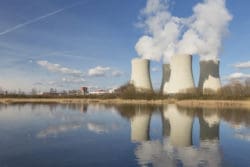Following the Climate Change Act passed in 2008, the United Kingdom’s Parliament declared a climate emergency in 2019, recognising the impact and significant challenges posed by climate change, a global issue.
Reducing global carbon emissions and mitigating for the impact of climate change are undoubtedly some of biggest challenges facing our generation.
Given that the built environment accounts for approximately 40% of global carbon emissions, reducing greenhouse gas emissions and mitigating for the effects of climate change that is already occurring are issues which cannot be ignored by those involved in the built environment sector, be that employers, contractors, professionals or their insurers.
There will inevitably be significant regulatory changes and developments in the near future if governments around the world are to reach their targets to reduce carbon emissions or reach net zero and those involved in the built environment sector will need to respond with innovative design, new methods of working, new technology and materials as well as collaboration if these challenges are to be met.
Any discussion about climate change will also include the insurance industry. Whilst to date most of the focus has been on rising global temperatures and insurance risk, there are a variety of areas where the insurance industry can contribute to the fight against climate change and the road to net zero. The insurance industry can be a driver for change whilst taking advantage of underwriting and investment opportunities. At present major players in the insurance industry constitutes 12 of the 26 members of the United Nations- convened Net-Zero Asset Owners Alliance, a coalition committed to making their portfolio carbon neutral by 2050.
Change will not only be driven by governments, but clients and employers are beginning to demand more efficient and sustainable buildings and infrastructure. Likewise, designers, contractors and suppliers are beginning to compete by differentiating their offerings in terms of sustainability or reduced environmental impact.
In our Beyond Net Zero series, we will be looking at some of the challenges facing the built environment sector and some of the positive developments, be that innovative low carbon materials, refurbishment and retro-fit of existing buildings rather than demolition and rebuild, designing for the circular economy and forthcoming regulatory changes.

















